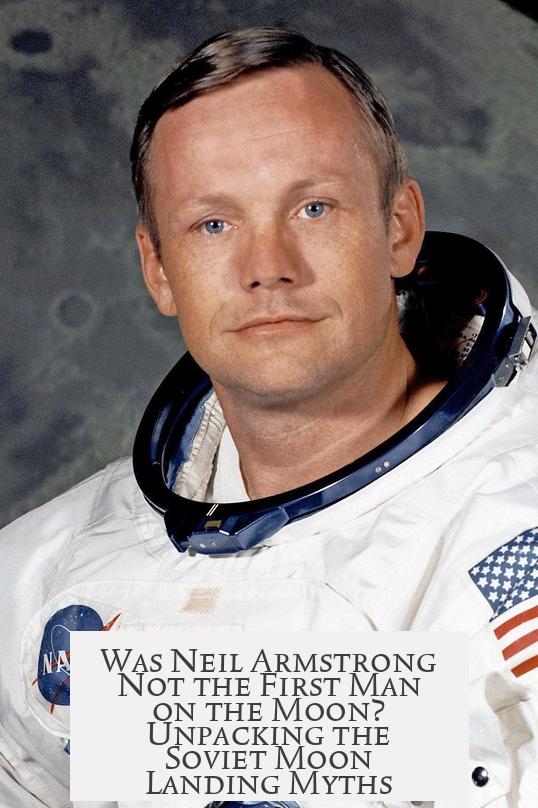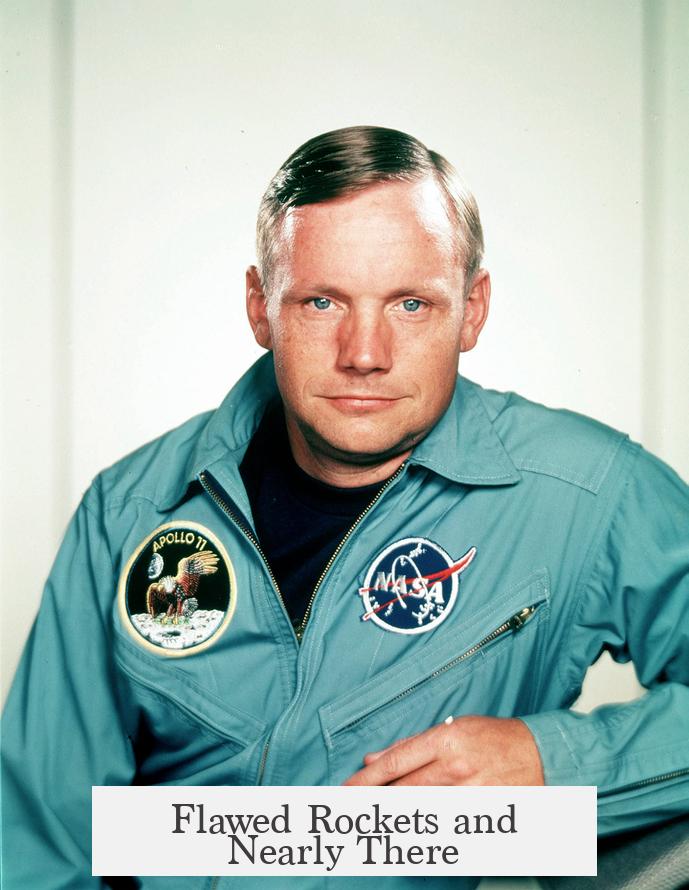Neil Armstrong is indeed the first man on the moon. There is no credible evidence contradicting this fact. The idea that Armstrong was not the first is a myth unsupported by verified data.
The claim that Armstrong was not the first man on the moon often stems from theories about secret Soviet lunar landings. However, these theories conflict with substantial historical and technical evidence. The Soviets had no known successful manned mission to the moon before Armstrong’s Apollo 11.
Any Soviet manned lunar mission—even without an astronaut stepping onto the moon’s surface—would have been a major global event. Moscow would have publicized such an achievement extensively. The notion that the Soviets could hide such a mission throughout the Cold War is highly implausible.
Indeed, missile launch detection satellites known as the MIDAS system had been tracking launches since the mid-1960s. Any rocket powerful enough to send humans to the moon would have been detected by these satellites. Alongside satellite detection, ground-based radars and seismic sensors would have noticed unusual activity related to lunar missions.
Additionally, the Soviet lunar program faced numerous internal challenges. Multiple programs competed for the same resources, driving political struggles and confusion. Sergei Korolev and Vladimir Chelomei were two leading figures who ran competing efforts, and political shifts further destabilized the program.
After Premier Nikita Khrushchev was replaced by Brezhnev, Chelomei’s project was canceled, consolidating efforts under Korolev. When Korolev died in 1966, leadership passed to Vasili Mishin. Several serious technical and management issues then slowed progress.
Despite some Soviet firsts before the American landing, such as Luna 9’s soft moon landing and Luna 10’s lunar orbit, these were unmanned missions. These achievements showed Soviet capability but are not comparable to the manned Apollo 11 mission.
Quality control problems severely affected the Soviet manned space efforts. The fatal Soyuz 1 mission in April 1967, which killed cosmonaut Vladimir Komarov, caused a two-year halt to manned flights. This pause destroyed any realistic Soviet chance of beating the US to the moon.
Failures with launch systems such as the L1 and N1 rockets continued to plague the Soviet effort. For example, many test flights either failed during launch or ended in aborts. The Zond-5 mission in 1968 successfully flew around the moon and back, but it was unmanned and carried a recording of a human voice, not a live astronaut.
After Apollo 8 orbited the moon with humans in 1968, Soviet leadership recognized they could not win the race. Funding diminished, and further failures, including a launch pad destruction, effectively ended the lunar program before any successful manned landing.
Many stories about secret Soviet moon landings stem from urban legends and unverified hoaxes. Some claim that Soviet cosmonauts landed but were hidden or erased from history. These claims do not hold up against public Soviet disclosures, including the well-known death of Komarov, which was publicly mourned and thus incompatible with secrecy theories.
Since the Cold War, Russia has admitted to many space program failures. Transparency has increased, with no credible evidence ever emerging of a Soviet manned lunar landing. Any partial success or attempt would have energized the Soviet program and caused a global stir.
| Point | Details |
|---|---|
| Detection Technology | Mid-1960s MIDAS satellites and ground radars tracked rocket activity globally. |
| Soviet Lunar Program Issues | Multiple competing programs, political turmoil, leadership changes, and technical failures. |
| Notable Soviet Lunar Achievements | Unmanned: Luna 9 soft landing, Luna 10 lunar orbit, Zond-5 lunar flyby with recorded voice. |
| Failures & Impact | Soyuz 1 fatal crash in 1967 stopped manned flights for two years. |
| Urban Legends | No credible evidence supports secret Soviet manned missions. |
- Neil Armstrong is confirmed as the first man on the moon.
- Secret Soviet lunar manned landings are highly implausible given global detection capabilities.
- The Soviet program struggled with political issues, technical failures, and leadership changes.
- Soviet successes were limited to unmanned missions before Apollo 11.
- Urban legends about secret Soviet landings lack credible evidence and do not align with known history.
Was Neil Armstrong Not the First Man on the Moon? Unpacking the Soviet Moon Landing Myths

Short answer: Neil Armstrong was indeed the first man to step on the moon. But if you’ve stumbled upon tales suggesting the Soviets beat the U.S. or snuck a secret landing past everyone, hang tight. We’re going to dive into why those stories don’t hold water—no moon dust there!
Space race rumors have always had a certain sci-fi allure, much like secret agents and alien conspiracies. Among the most enduring myths? That the Soviet Union secretly landed a cosmonaut on the moon before Neil Armstrong’s iconic “one small step” in 1969. Sounds intriguing, but when you scratch beneath the surface, the idea crumbles fast.
The Impossible Secret: How Could the Soviets Hide a Moon Mission?
Imagine trying to launch a massive rocket to the moon without anyone noticing. Sounds impossible, right? That’s because it is. By the mid-1960s, several detection systems were in place. The U.S. had missile launch detection satellites orbiting Earth.
These early warning satellites, like those in the MIDAS program, monitored rocket launches day and night. Any sizeable moon-bound rocket would scream “I’m heading to the moon!” across global radar systems.
Not just satellites—ground-based radar stations tracked objects in orbit. Then there’s radio chatter; a manned spacecraft leaving Earth’s orbit would emit communication signals. If the Soviets had flown and landed on the moon, the world would have known immediately. No cloak-and-dagger here.
The Soviet Lunar Program: More Drama Than a Soap Opera
Trying to pinpoint who was in charge of the Soviet moon mission is like untangling spaghetti. The USSR didn’t have one neat lunar program. Instead, multiple programs worked in competition, draining resources and fouling progress.
- Sergei Korolev, the principal Soviet rocket engineer, led one major program.
- Meanwhile, Vladimir Chelomei ran another, backed politically through ties to Premier Nikita Khrushchev.
When Khrushchev was ousted, Chelomei’s program lost favor and funding, leaving Korolev’s plan as the main hope. But fate dealt another blow—Korolev died during surgery in 1966. His protégé Vasili Mishin inherited the project but couldn’t pull off a successful manned lunar landing.
Successes Without Astronaut Boots on Lunar Dust
The Soviets scored some ‘firsts’ on the moon. Luna 9 achieved the first soft landing in 1966, and Luna 10 followed by becoming the first lunar orbiter. Both impressive feats. But these were robotic missions—not cosmonauts stamping their boots on the lunar surface.
The desire to outpace the Americans led to severe quality control issues. A tragic example: cosmonaut Vladimir Komarov died in 1967 when his Soyuz capsule’s parachute failed during reentry. That accident grounded manned Soviet flights for two years—a massive setback in the moon race.
Flawed Rockets and Nearly There

The Soviets’ L1 launch system, meant for a manned lunar flyby, continuously ran into technical problems. Launches failed or ended in incorrect orbits. Western intelligence definitely noticed these flops. A successful mission in 1968, Zond-5, managed to orbit the moon and return to Earth, but it carried biological specimens and a recorded voice—raising alarms but no humans aboard.
Andy told us “They got close, but no cigar.” Apollo 8 orbited the moon in late 1968, proving America’s lead. Moscow privately admitted defeat in the lunar race, and the Soviet N1 super-rocket program folded under the weight of failures, including a massive launch pad explosion.
Urban Legends and Why They Don’t Fly
Since then, stories of hidden Soviet moon landings have popped up in tabloids and online rumor mills. Some claim cosmonauts died on the moon or came back—but were erased from history.
But there’s strong evidence against these claims:
- Vladimir Komarov’s death was public and mourned by the Soviets, despite being tragic and avoidable. They didn’t hide it.
- Russia has since revealed various embarrassing program failures after the Soviet Union’s fall.
- If the Soviets had succeeded even somewhat, it would have energized their program and shaken the world.
So these stories feel more like folklore than fact—fuel for sci-fi fans rather than real astronauts.
Why Does This Matter Today?
Understanding what really happened during the space race isn’t just trivia—it’s a lesson in truth, technology, and perseverance.
The Soviets pushed boundaries and achieved robotic lunar milestones first, proving incredible ingenuity. The Americans, led by Armstrong’s historic first step, showed how organization, focus, and learning from failures can make the impossible happen.
Next time someone asks, “Was Neil Armstrong really the first man on the moon?” you can answer confidently: yes, he was. And here’s why the alternative tales just don’t stand up.
In Conclusion
Secret Soviet moon landings? Highly implausible. Detection satellites and radars would have spotted the launches and any lunar activity. Internal chaos and technical failures crippled the Soviet manned lunar effort. The Soviet Union openly mourned its astronaut losses instead of covering them up. They admitted after the Cold War to their space program setbacks, not hiding their failures.
Neil Armstrong’s moonwalk is history’s well-documented milestone. The Soviet program, heroic and pioneering in some respects, simply wasn’t ready for a crewed moon landing at that time.
Want to dig deeper? Check the MIDAS satellite program archive or explore records on Soviet space endeavors post-USSR collapse. Spoiler alert: No secret moon landing files have surfaced.
Feel free to share your thoughts. Do you find the competing visions of the space race fascinating? Or have these myths already lost their shine? Either way, the real story of space exploration is wild and inspiring enough—no conspiracies needed.




